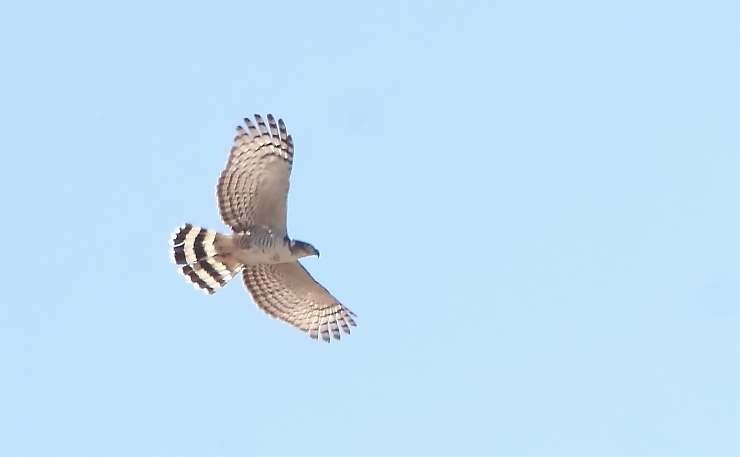
Cedar Waxwings have come back to central Mexico. Most years, there are no more than a few dozen reports of this species across the region. But in 2020 I personally saw thousands of Waxwings in a dozen or so sites, and every one of my birder friends across the country had a similar experience. This year, the sightings are less, so far. (I have seen exactly one Waxwing this year.) But there have still been hundreds of Waxwing reports across the country this year, and they are still on the increase.
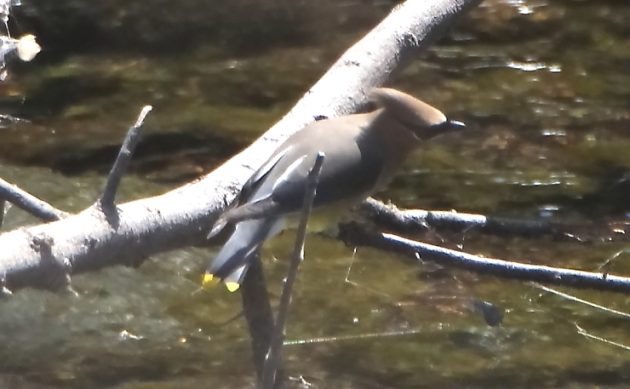
Here is my only Cedar Waxwing for 2023… so far. Many years I see none.
This behavior is known as an irruption. Certain kinds of birds, such as finches and Snowy Owls, may go for years without travelling outside of their normal ranges. Then a lack or abundance of food sources will cause them to suddenly move in great numbers beyond their usual limits, often to the south, and in winter. While this is more commonly experienced in the U.S. and Canada, Waxwings are clearly an irruptive species for Mexico.
On the other hand, I have grown very accustomed to seeing White-tailed Hawks outside their official range. Both my Howell’s A Guide to the Birds of Mexico and Northern Central America, published in 1995 and printed in 2012, and my constantly-updated Merlin App, show maps which suggest that I should not see this beautiful Hawk in my region. And yet, I have exactly 50 sightings on my list… and counting. In fact, I had a very dramatic encounter just last week, just before arriving at an Amerindian town two hours from home. Two hawks took advantage of a very stiff wind to hover just overhead.
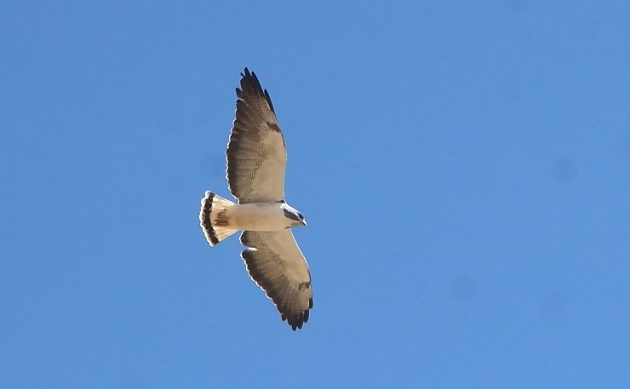
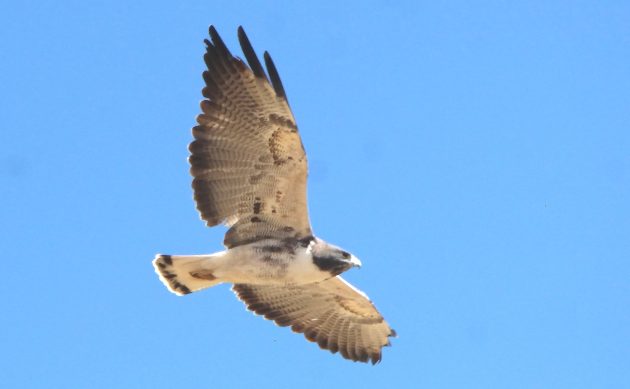
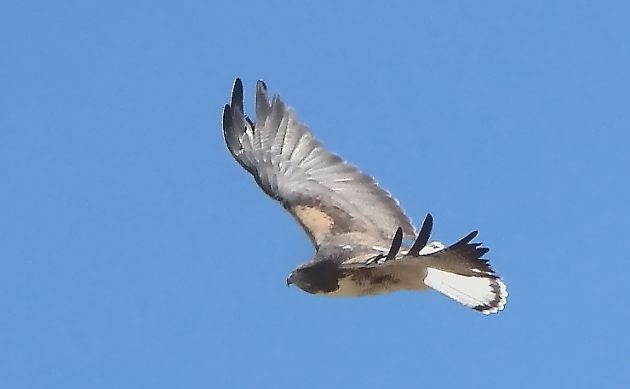
And here they are, including a rare view of the upperparts of one hawk.
In the case of these hawks, they definitely are not showing irruptive behavior, as I have seen them multiple times each year, often in the same place. (I used to impress birder friends as we drove east from Morelia in the morning, by telling them that “Just over this hill, there will be two White-tailed Hawks on a dead tree”. They never failed me, until one month they finally decided to permanently roost farther from the highway.)
I can only posit two explanations for this situation: Either Howell and Merlin are both just plain mistaken, which I find hard to believe, or this species has managed a significant increase in its central Mexican range. Indeed, it was not recorded on eBird in Morelia before 2010, but has been reported all over the city and surrounding area since then. My money is on a range extension. (Especially since I would be crazy to bet against Steve Howell. If you happen to read this, Steve, I have nothing but mad love for your work.)
Which brings us to the species in this post’s title. The Hook-billed Kite is a wonderful bird. I saw it described somewhere as a parrot’s bill stuck to a hawk’s body. Like the Snail Kite, which has a similar bill, it uses that sharp hook to eat water snails, and is therefore almost always seen near water.
Until recently, I had only seen it once — and to tell the truth, I now have my doubts about that first sighting, since I was a very new birder, was often mistaken back then, and did not leave any photographic proof of it. Other than that, there are exactly three eBird registries for the highlands of my state, and points north, before 2020 — two that I trust completely, and one which I doubt.
But in my first outing for 2023, on the second day of the year, my botanist friend Nacho and I saw a magnificent dark-morph Hook-billed Kite just north of Lake Cuitzeo. Last week, Nacho photographed a light-morph adult, and an ornithologist friend saw 5 Kites flying overhead near Nacho’s site. This week, I saw a light-morph immature Kite a few miles from our January sighting. Not only that, but this species has now been reported repeatedly in the area of Pátzcuaro, Michoacán, as well as further north, near the cities of Salamanca, Irapuato, León, and Querétaro.
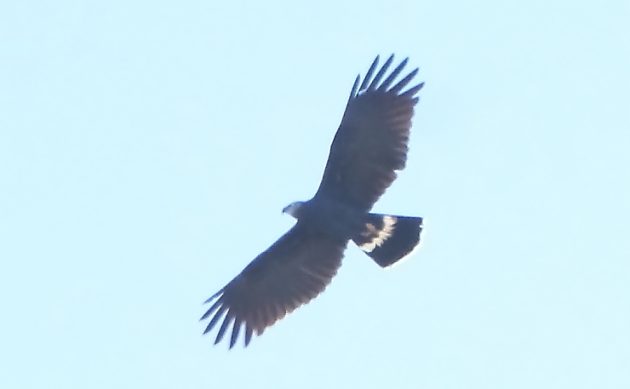
Our Kite #1, dark morph
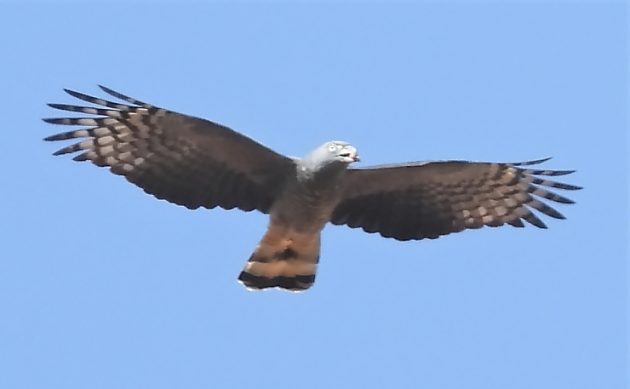
Nacho’s Kite #2, light morph adult, with what appears to be a snail in its bill
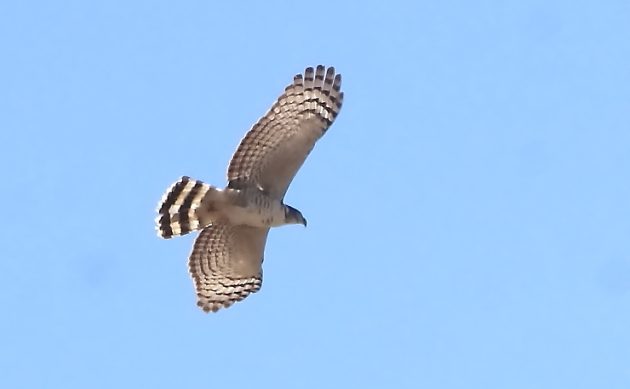
My Kite #2, light morph immature
In Mexico, there is always the possibility that a given species has not been reported because of a lack of birders, rather than a lack of birds. Still, this is a very clear trend. A Hook-billed Kite irruption seems unlikely, since we are in our third year of a steady increase in sightings. So once again, my money is on a range extension.
And, gee, I do hope I am right.













Leave a Comment